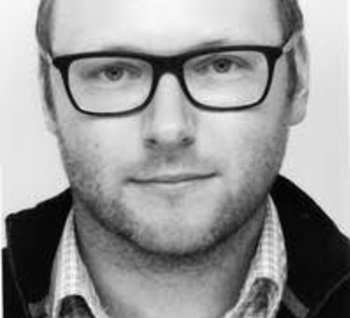Research trip to Israel thanks to Minerva short-term research grant
Art Historian Dr. Oliver Sukrow following the footsteps of Jewish-German artist Lea Grundig and her adventurous exile
My two-week archival research trip to Israel starts in the heart of Tel Aviv: At the crossroads of HaYarkon and Bograshov Street, the enormous efforts and the many tragic fates of immigrants from all over Europe, to whom the mandated territory offered refuge from the war, the National Socialists and the systematic extermination of the Jewish people, is commemorated.
One of the passengers aboard one of those ships that landed at the port of Haifa in 1940 was Lea Grundig. Born and grown up in Dresden, the Jewish-German graphic artist, cultural policy maker and university lecturer Lea Grundig (1906–1977) lived in exile in Palestine between 1940 and 1948.
Shimmering in many colours: an unusual path of life
The artist’s outstanding and complex biography had fascinated me since I wrote my master thesis at the University of Greifswald (published in 2011), and I had spent a lot of time reflecting on it: Lea Grundig, née Langer, was the daughter of a Jewish merchant family in Dresden. In the 1920s, she became acquainted with Hans Grundig (1901–1958). Together, they joined the Communist Party and ASSO, the “Assoziation revolutionärer bildender Künstler” [Association of revolutionary visual artists]. They advocated for social issues and against the upcoming fascism.
After the National Socialists had seized power in 1933, Lea and Hans found themselves in the sights of the Gestapo, which was followed by imprisonments and finally by forced divorce. Whereas Hans was sent to the Sachsenhausen concentration camp near Berlin as a political prisoner, Lea emigrated to Palestine via the Danube, where parts of her family were already living.
She was aboard the SS “Patria” and survived to the failed attack of the Haganah in November 1940 in the port of Haifa, in which more than 260 people were killed. One of the results of my investigations at the archive of the Atlit Immigration Camp was the discovery of a name list of prisoners, including Lea Grundig, which mentioned the nationality and the duration of imprisonment. Grundig spent almost one decade in the mandated territory, she lived and worked in Haifa and Tel Aviv and returned to Dresden in 1948/1949. Grundig became the first woman ever to be appointed professor at the Dresdner Akademie [Academy of Dresden] and gave lessons in graphic design. From the 1950s onwards, she increasingly put herself in the limelight as a cultural policy maker and was President of the Visual Artists' Association of the German Democratic Republic from 1964 until 1970.
New sources, new avenues of research

My research project links Grundig’s artistic oeuvre from 1940 until 1948 with the political cultural context of the mandate period. Starting from a specific 'topography of the exile', I did not only visit authentic places of remembrance such as the Atlit internment camp during my research stay in Israel. I also started to develop a spatial idea of the working and living environment of this great artist. For this purpose, I conducted research work in the following archives and collections in Jerusalem and Tel Aviv: National Library of Israel, Central Zionist Archives, Israel Museum, Atlit Memorial and Tel Aviv Museum of Art. These research opportunities enabled me to formulate first approaches of a new working biography about Lea Grundig. Far away from the constructions of GDR historiography, the reception of which continues to be decisive up to the present day, Grundig emerges from the sources and primary literature of that time as an exceptionally active and self-determined artist who was able to build up a new existence in the mandated territory. However, we still know too little about her networks and supporters who enabled her to illustrate a large number of important Hebrew children’s books. This collection, which belongs to the National Library of Israel and will now – inspired by my research activities – be made accessible digitally, is an outstanding source for the future exploration of the person of Lea Grundig and her oeuvre in Israel.
The short-term research grant from the Minerva Stiftung offered me not only a first insight into the existing records; it also enabled me to build up my scientific network with Israeli research institutions and scientists, which will be a sustainable benefit for my further investigations.





